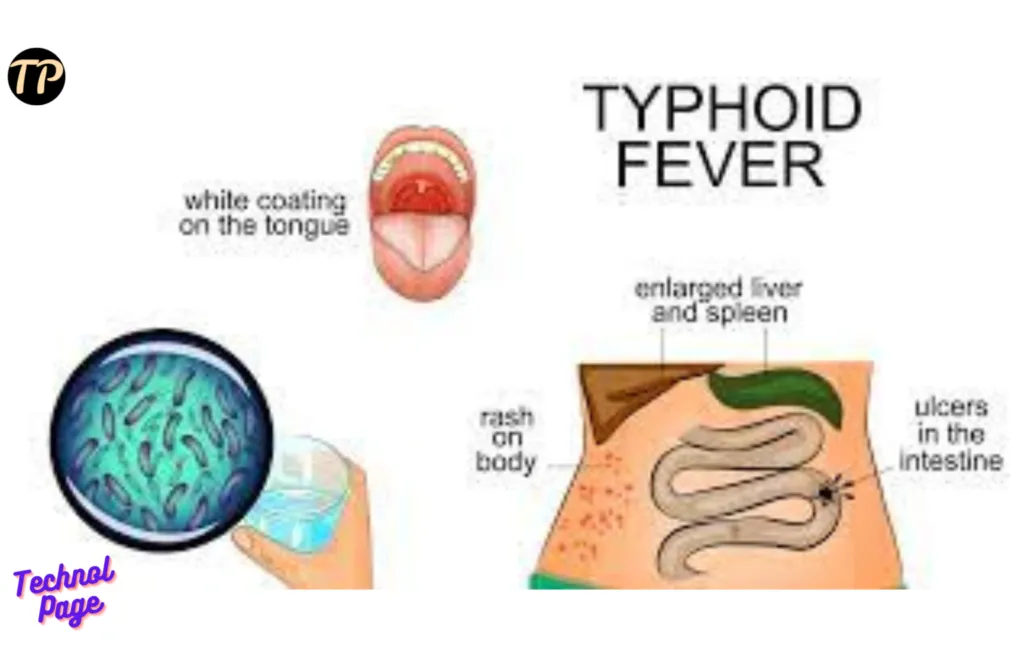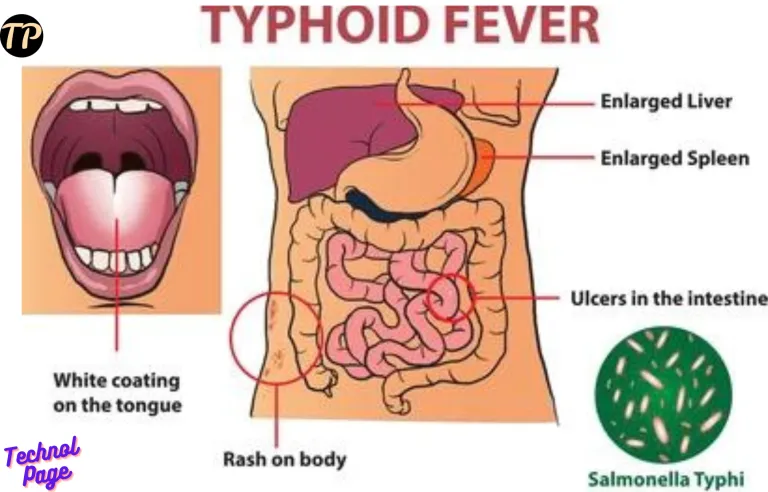Table of Contents
What is Typhoid Fever, Symptoms, Treatment and Causes

Introduction
What is Typhoid Fever
A bacterial infection brought on by tainted food or water is known as typhoid fever. After first affecting the digestive system, it eventually enters the bloodstream. Given that it mostly affects our intestines, it is sometimes referred to as “enteric fever.”
Typhoid (or enteric fever) is an infection caused by the bacterium Salmonella typhi. It mainly affects the intestines, but can spread to the bloodstream as well. Poor hygiene, contaminated drinking water and food are some of the main causes of this infection. S. typhi enters the intestines through your mouth and remains there for about 1 to 3 weeks. It then spreads through your bloodstream through your intestinal wall. This typhoid bacteria then spreads to different tissues and organs, hiding inside the cells that your immune cells cannot detect. Fortunately, there are better treatment options for typhoid, but if left untreated it can be life-threatening. Some estimates suggest that 3-5% of people affected by typhoid eventually become carriers of the bacterium, and asymptomatic individuals can become carriers as well.
Types of Typhoid Fever
There can be many types of typhoid, the names of some are given below.
1).Paratyphoid Fever
2).Typhoid Fever
3).Abdominal Typhoid
4).Non-Typhoid Salmonellosis
5).Diarrheal Typhoid
All the symptoms of the types of typhoid mentioned above remain almost the same.
Symptoms of Typhoid
After being exposed to the germs, typhoid patients have symptoms one to three weeks later. The sickness may take up to three or four weeks to fully manifest, depending on its severity. A 7–14 day incubation period is typical. Here are a few of the primary symptoms of typhoid:
1]. Having high fever.
2]. Having a headache.
3]. Feeling cold.
4]. Having constipation.
5]. Pain in muscles.
6]. Vomiting and diarrhea.
7]. Nausea.
8]. Having pain in the stomach.
9]. Loss of appetite.
10]. Feeling uneasy.
11]. fever up to 104 degrees
Your symptoms may be different from those shown above.
If you feel any of the symptoms mentioned above, contact your doctor immediately.
Due to Typhoid
There can be many reasons for typhoid. When a person consumes foods and water that are high in S. Typhi bacteria, they can get typhoid fever.
Furthermore, a typhoid patient’s faeces can pollute the nearby water supply. As a result, the patient’s immediate food supply chain can become tainted.
Typhoid can be caused by the following :
1}. Contact with infected person
2}. Infection through food water
3}. Using a dirty toilet
4}. Eating with unclean hands
5}. Having oral or anal sex with a person infected with Salmonella typhi bacteria.
6}. Coming in contact with the feces of a patient infected with Typhoid Fever.
There may be some other reasons for causing this disease.
How is Typhoid Diagnosed?
The doctor may urge you to undergo testing if, based on your symptoms, he believes you may have typhoid. You could require a blood, stool, urine, or bone marrow test to determine whether Salmonella Typhi is present in your body. The most accurate test for typhoid germs is thought to be a bone marrow culture. In order to look for typhoid antibodies and DNA, the doctor might additionally recommend additional blood testing.
How is Typhoid Treatment ?
1]. The bacterial infection is eliminated when treating typhoid fever. Antibiotics such as ampicillin, ciprofloxacin, trimethoprim, sulfamethoxazole, ampicillin, and chloramphenicol are prescribed for this.
2]. Oral rehydration therapy is used if the patient is able to consume food supplements. This aids in preserving the fluid loss brought on by diarrhoea.
3]. IV kits are used to provide fluids and medications to a typhoid patient who is critically ill.
4]. Antibiotics are administered to people who are chronically sick, and in more severe situations, surgery is used to remove the gall bladder.
Disclaimer:-
This article contains general information about medical conditions, treatments, and home remedies. The information provided on the article is purely for general reading, and is not the result of in-depth research or tests conducted in laboratories. The information provided here is not medical advice, therefore it is not intended to replace a physician’s consultation, and should not be considered a substitute for medical diagnosis or treatment from your doctor, or any other licensed health care professional. The suggestions given in the article are for general information only and should not be taken as professional medical advice. Consult your doctor if you have any questions or concerns.
You have read this blog completely and with great attention ,This is our sentiment. If you have any questions regarding the content of our website, you can contact us.
Please visit us :- To know more about our website, please visit our About Us and Disclaimer page.
Thanks





